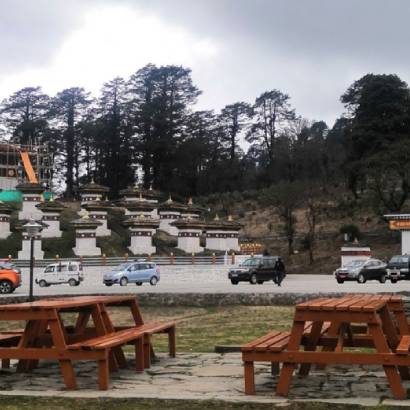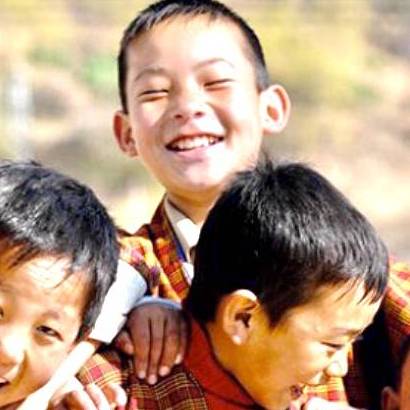BHUTAN
ACCOMODATION
3-4 Star Hotel, Twin Sharing
TERRAIN TYPE
Plains, Hilly, Mountainous, Trekk
DAYS
7
MAXIMUM AGE
65
MAXIMUM ALTITUDE
5000 Meters
BEST SEASON
Feb, Mar, Apr & May
GROUP SIZE
6-10 Pax
TOUR DATES
On Request
TOUR MODE
Motorcycle
DEPARTURE FROM
Phuntsholing
MEALS
All Meals Included
MINIMUM Age
18
FITNESS LEVEL
Moderate-Fit
WHAT'S SPECIAL?

Bhutan
Bhutan is the only carbon negative country in the world, which means that it absorbs more carbon dioxide than it produces. Let's explore pollution free Bhutan.

No Traffic Lights
Roads are a rather dangerous adventure in Bhutan , However, the Bhutanese drive very slowly and cautiously, so traffic lights are not required.

Happiness Prevails Over GDP.
Bhutan does not believe in GDP as an indicator of economic growth and development. Experience happiness like never before.
ITINERARY
A Day By Day Plan
Arrive to Phuentsholing, the gateway to Bhutan from Siliguri
As soon as you arrive at Phuentsholing, your guide will be there to meet and greet you. The guide will escort you to the hotel. If the arrival is in the morning time, we will apply for the route & vehicle permit on the same day. If not, we will do it in the next morning. The immigration office operates from 9 am to 5 pm. We may expect a rush or a crowd as March, April & May, September, October & November are the peak tourist seasons in Bhutan.
Evening at leisure. Dinner at hotel or in a restaurant nearby. Over Night at Hotel in Phuentsholing | Altitude: 293 M
Phuentsholing-Paro
After breakfast, we will complete our route permit for everyone in the group as well as the vehicle permit. After our permit works are done, we will start our journey towards Paro. Please know that in each check post, you are required to get down and get the permit verified. Please keep some warm clothes ready as you go higher, you may feel cold. Our tour begins with a journey towards Paro. Situated at an altitude of 2250 m, it is the home to approximately 40,000 Bhutanese. Paro is one of most visited place by tourists due to its many monasteries, especially Taktshang Monastery a.k.a. Tiger’s Nest which is popularly known to the tourists.
The driver will stop the vehicle at the place known as Wangkha in the Phuentsholing-Paro/Thimphu highway for lunch. You will get Indian and Bhutanese dishes. You may get ask the driver to stop the vehicle if any sceneries attract you, that you would want to take the pictures.
After arriving at Paro, you will be escorted to the hotel. After freshen up, you may take rest for sometime and after that, go around the Paro town in the evening to explore beautiful town of Paro which is typically Bhutanese architecture.
Dinner at hotel or in a restaurant at town. Over Night at hotel in Paro | Altitude: 2250 M
Paro-Taktshang Hike/Tiger Nest Hike
After breakfast, we make a hike to Paro Taktshang Monastery, the most famous and scared monastery in Buddhism world. Taksang means “Tiger Nest” named after Guru Rinpoche reportedly flew to this site riding on the back of a flying tigress late in the 9th century. We have to walk about 2hours up steep from the road end and 2 hours down. The trail climbs through beautiful pine forest, many of the trees festooned with Spanish moss, and an occasional grove of fluttering prayer flags.
You may hire a pony if you think you can’t walk up. Ponies are available on charge.
Lunch at Taktshang cafeteria or at town after hike.
OR
You may just visit the basement of the hill and visit the following places:
National Museum – Housed in the Ta Dzong (Watch Tower) of the Rinpung Dzong. In the Museum the intriguing collection of artifacts serves as a great introduction to the rich culture and Heritage of the Kingdom. The National Museum boasts a rich variety of exhibits collected from all over the country and belonging to different eras, Some as early as 2000 B.C.A visit through the galleries shows the country’s transition the later stone Age to a modern Mahayana Buddhist Kingdom.
Paro Dzong – Take in the amazing architecture of this 17th century monument, a premier example of Bhutan’s architecture . Paro Dzong, built in 17th century to defend Paro from the Tibetan invasion, is also known as Rinpung Dzong, Which means the ‘Fortress on a heap of Jewels’. This fine example of Bhutanese architecture now serves as a central monastic and administrative seat of the Paro district. From the Dzong, a leisurely walk back into Paro town crossed the scenic Nyamai Zampa, a unique model of Bhutan’s traditional cantilever bridge.
After these two sites, we will drive towards the view point of Paro where you can see the Paro airport view, Paro dzong and the Paro valley.
Drukgyal Dzong- Drukgyal Dzong was one of the defense fortresses. The dzong was built by Tenzin Drukdra in 1649 at the behest of the Zhabdrung Ngawang Namgyal to commemorate the victory over an invasion from Tibe. The dzong was burnt in 1951.Only the ruins of the giant walls, charred gigantic wooden posts, beams and watch towers can be seen which was once an important fortress that repelled several invasions from the north.
After the birth of our royal prince, the Gyalsey in 2016 and to celebrate the birthday, the former prime minister announced that the dzong will be rebuilt and reinstate it’s glory.
Kyichu Lhakhang – The 7th century monastery is one of the oldest and most sacred temple in the kingdom where the seed of Buddhism was won in Bhutan. The Tibetan King, Songsten Gampo ordered the establishment of monasteries in the Himalayan region to subdue evil spirits and to spread Buddhism. Of the 108, which were to be built, two major ones were built in Bhutan namely the kyichu Lhakhang and Jampa Lhakhang in Bumthang. Kyichu Lhakhang, which pins down the left foot of a treacherous Ogress, are a great finish to this day of cultural immersion and your journey to this ancient kingdom of Bhutan.
Dinner at hotel or in a restaurant at town
Evening Leisure time.
Over Night at hotel in Paro | Altitude: 2250 M
Paro-Chelela-Thimphu
After our breakfast, we drive to Haa via Chelala pass (3988m). This is the highest pass in Bhutan were our car can take us. The pass is adorned with different kinds of prayer flags. On clear days, we can also see the Mountain Jhomolhari (goodness of mountains) & Jichu Drakey (the most beautiful mountains in Bhutan). Then, we descend down to Haa valley while descending down we can view three brotherly mountains known as Meri Puensum. We will stop for lunch in the remote town of Haa.
Drive to Thimphu in the late afternoon.
Over Night at hotel in Thimphu | Altitude 2350 M
Thimphu-Thimphu
After the breakfast, we will visit the following places which we missed out during weekend.
National Memorial Chorten – This is a Tibetan-style chorten built in 1974 in memory of the late King Jigme Dorji Wangchuk who passed away in 1972. It is one of the most visible religious structures in town and for many people it is the focus of daily worship. Remember to walk around the chorten at least at least once to gain merit and good luck.
Buddha Dordenma Statue –This massive statue of Shakyamuni measures in at a height of 51.5m, making it one of the largest statues of Buddha in the world. The statue is made of bronze and is glided in gold. The Buddha Dordenma is located atop a hill in Kuenselphodrang Nature Park and overlooks the southern entrance to Thimphu valley.
After Lunch:
General Post Office – For stamps, Bhutan is famous for producing unique and innovative stamps. After selling peculiar “CD-Stamps” Bhutan’s Post Office now offers personalized stamp; we invite you to surprise your family and friends with your custom-made stamp made with one of your favorite holiday’s photographs!
National Institute for Zorig Chusum: This institute commonly known as ‘the painting school’ operates four-Six years course that provide instruction in Bhutan’s 13 traditional arts. Students specialize in painting, woodcarving, embroidery or Statue making.
The Folk Heritage Museum – The museum is a restored three story traditional rammed mud and timber house inaugurated as a museum by Her Majesty the Queen Ashi Dorji Wangmo in 2001. It Showcase the traditional artifacts used now and in the past, which helps connect people to the Bhutanese rural life.
Bhutanese Paper Factory: The art of handmade paper in Bhutan dates back to the 8th century, although usage was limited mainly to religious purposes. Today it is considered an important element in the preservation of Bhutan’s cultural heritage. The factory allows guests to view the paper making process and purchase gifts from their show room. Evening Leisure time at Hotel.
Dinner at hotel or in a restaurant at town
Over Night at hotel in Thimphu | Altitude 2350 M
Thimphu Hiking
After breakfast, you will be going to the basement of Tango & Cheri monastery basement. You can go around the basement and enjoy the fresh cool air surrounded with the prayer flags. There is a river flowing just below the basement. You are allowed to go to the bank and take pictures.
History of Tango & Cheri Monastery: In 1627 the first Buddhist Monastic school for Bhutan was started by Zhabdrung in Cheri, which to these days has become a Meditation centre for higher level Buddhist studies. The Monastery buildings are old and still contains many sacred relic from past. Definitely, visit to this place is more purifying and refreshing. From the road head at Dodayna it will take about 40 minutes hike to reach Cheri Monastery. The trail leaves Dodayna bride and gently goes up through woods of blue pine, Oak trees and with lots of Rhododendron under growth.
After lunch, we will visit to the Royal Botanical garden if time permits.
Evening at leisure.
Dinner at hotel or in a restaurant at town
Over Night at hotel in Thimphu | Altitude 2350 M
Thimphu-Phuentsholing-Departure
After breakfast Transfer to Phuentsholing for your departure. Our tour staff will bid you farewell at Phuentsholing for your onwards departure .
© Travelinkedd Odysseys LLP | 2024


